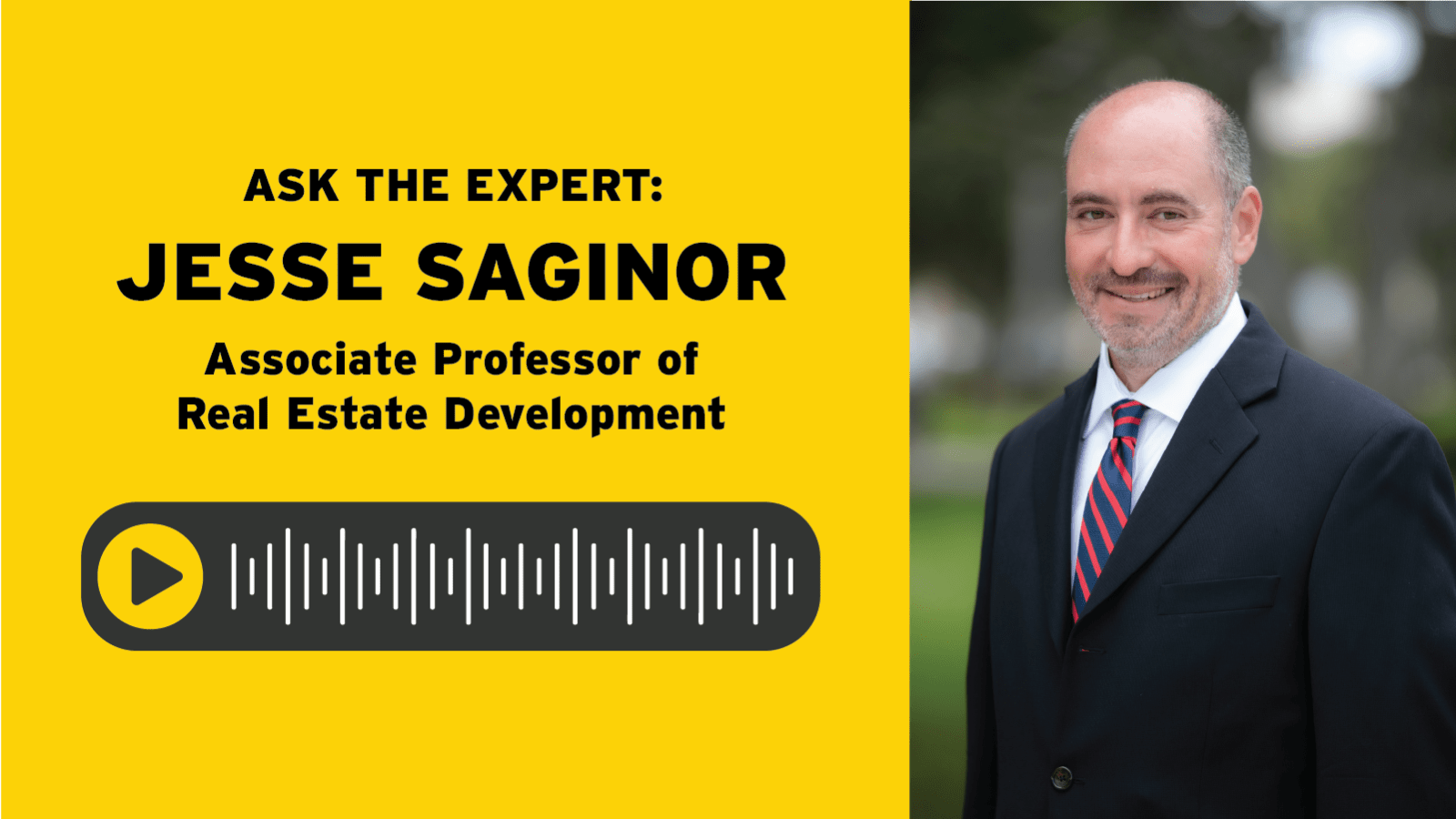The Federal Reserve's interest rate cut in September signaled that the inflation induced by COVID-19 is easing up—and a move economists say will make it easier for Americans to borrow money.
But it’s not enough to solve the housing crisis that many Americans are weathering, said Jesse Saginor, associate professor of real estate development. In 2013, half of all U.S. homes on the market were considered affordable using the standard 30% of housing expenses to monthly income ratio; by 2023, that number had plummeted to 16%. A dearth of housing stock, lower incomes and even pandemic migrations are all at play—and addressing the crisis is just as complex.
“There is no silver bullet,” he said. “Interest rates can help, but they won’t be the answer.”
Below, Saginor breaks down three reasons why it’s harder to buy a home now than ever before:
We’re building plenty of housing—just the wrong kind. The proliferation of high-end apartment buildings around D.C. could make anyone question the reality of a housing shortage. But, Saginor says that the problem is that in many cities, what’s being built isn’t for the people who need housing, such as the restaurant workers or service people who work there. That pushes mid- to low-income earners further out of the city where prices are cheaper—and inadvertently fuels a rougher commute. “It’s what contributes to congestion issues,” he said.
Our incomes have not increased at the same rate as the cost of the average home. In 1985, the median sales price of a home was about $78,000, with the average income at $22,000. In 2023, home prices had surged to $433,000, but income had only risen to an average of $74,000. “People may be making more money, but the demand for housing has pushed the price up far beyond what it was even 10 years ago,” he said. “You just need to make far more money to afford buying a home.”
Affordable housing must be championed locally. Most affordable housing incentive programs are largely funded by the feds, but programs are driven at the state, county, and city level, Saginor said. Cities also have some sway in boosting the amount of affordable housing being built, from offering tax incentives to footing the bill for infrastructure, which defrays development costs.
But, high-end development generates more property and income tax revenue than affordable housing projects—and is often the reason the supply doesn’t match the demand. “Thirty percent of a city’s population may have jobs that fall within the affordability range,” he said, “but you’re not going to find that same percent of affordable housing.”
Get the full conversation—from where to find a good fried avocado to the “sticky” factors that keep people in expensive cities—in the first of our “Ask the Expert” series on SoundCloud.

